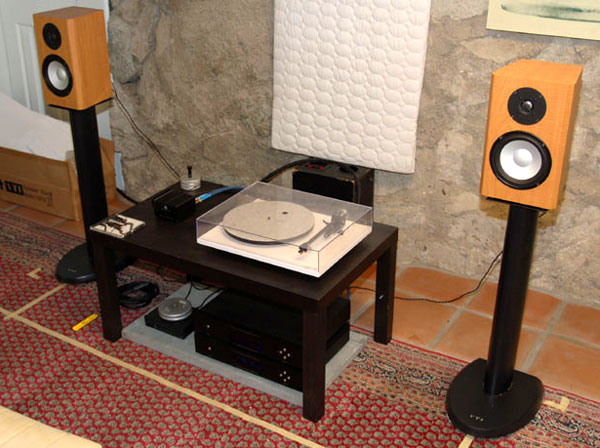
The Sound
The M3v3 sound was surprising at first. They presented a very extended and open top end that was light and delicate but airy and thin. Though there was a good amount of detail in the highs, it seemed like the mids weren’t on the same level. The upper mid-range and female vocals were solid but the lower mid-range was radically missing and cymbals dropped off too quickly to sound natural. You must understand though, this was right out of the box. So I’d be looking for these to correct themselves as the M3v3 broke in. I compensated for this sound by using the Van Alstine OmegaStar amplifier. Van Alstime solid state amps are known for their warm and tube like sound. Great amplifiers in my opinion, though my OmegaStar is a little fuzzy in mid range detail when driving exceptionally resolving speakers. But that is another story. The point being, out of the box, the M3v3 are in need of some breaking in. If you are going to demo a brand new set, I’d say don’t even bother. They change radically once broken in.
After about two weeks, I noticed the nether regions started to match the highs. There was more detail and a better cohesion throughout the audio spectrum. As well the highs developed a more solid sound and cymbal decay sounded much more natural. Though they kept their air and sense of space, the sounds themselves had more life. So this is where I started to switch in some of the pricier back end components I had on hand. After rotating through the amps and then back to the AVA Omegastar, I came to the conclusion that the M3v3 are able to do a lot of things very well.
Firstly, the M3v3 actually translate a good amount of the backing amplifiers characteristics. Changed out interconnects or speaker cables and yes one can hear that too. The M3v3 appear to be a fairly resolving and neutral speaker. I am pleasantly surprised. But be aware, this means if you pair them with something that sound tinny and sharp, well you know the saying, junk in equals junk out. And Axiom’s goals in speaker design and sound aren’t to cover up the sonic mistakes of backing equipment.
When I switched from the SS Electrocompaniet PC-1 to the pentode designed Mystere ia11 tube integrated amplifier the M3v3 did what I expected. The highs were slightly castrated in their extension but what remained was smooth and there was greater sense of blackness between songs and notes. Guitars, vocals, strings all had a more body and weight to their tone. With the linear SS Electrocompaniet the M3v3’s high end was light, airy, and playful. This is one of those hard parts in describing a sound. Some might say the M3v3 are airy, some might say they sound a little thin, some might say they sound like both options. But point being though that for me the highs never materialized into a sonically solid enough state that I could be fooled into thinking I wasn’t listening to speakers. But hey, this is why you pay big bucks for speakers that can fool you.
But the level of resolved detail the M3v3 provide across the spectrum is pretty dang astounding. I mean, we aren’t talking Marten Coltrane 2 level of astounding, but Axiom is surely a top candidate in the sub $1000 range. I could hear echoes and background tape noise very well when the M3v3’s were the front end of a $10,000 system. But frankly, that level of detail, unless done remarkable well, is a bit much for me. Which is why I tended to pair the M3v3 with slightly rolled off tube amplifiers or similar rolled off solid state amplifiers.
But what about the M3v3 dynamic range or tonal accuracy, and don’t forget instrument separation and staging? Lest we forget, what about the bum shaking bass?
Dynamically speaking, the M3v3 has a bit of a flat affect. Horns, snare snaps, electronic sounds, and pinging transients never really grabbed my ears and forced me to pay attention. Dynamics to me, along with the overall tone presented, are the life force in music. Think about it, remember the Econ professor in Farris Bueller’s Day Off. Bueller?…Bueller?…Bueller?… Speak like that guy does and watch your friends, family, and co-workers drop into a comma every time you open your mouth. Give a speech with the stops, starts, inflections and volume shiftiness of Dr. King and you’d be able to form a movement. But please, don’t get me wrong, I’m just using these examples to prove a point. The M3v3 aren’t nearly as drab as that Econ Professor, but I’d say their dynamic range is basically on pare for their price point. Or I’d hope to see it improve in future versions of the speaker. I’d personally like a bit more out of the M3v3’s 6.5†driver. But maybe it is a trade off; extended detail, linearity, and tonal accuracy for a slightly reduced dynamics range.
Tonal accuracy seemed good and instrument separation was distinguishable. More difficult with extremely complex music like a large orchestral pieces, but that is to be expected. There are $50,000 systems out there that don’t get it right half the time either. More importantly, for speakers of this price, is that there were no holes in the stage and the image, if a little flat, was at least continuous and solid. And like I said earlier, they are very easy to setup which, so one shouldn’t have any trouble getting a good stage.
The M3v3 have a very easy time disappearing into the background and giving the listener the music. The music was never in my face. The M3v3 aren’t laid back or rolled off, nor is the midrange blurry, they just don’t throw the whole image in your face. You remain a few rows back at all times. Which is fine, who wants to have their head right against a snare drum? I think this could be attributed to the airy quality to the sound. If a truly solid image isn’t formed, the sound remains a constant few feet removed. So be it, I have heard some $80,000 systems that have had that trait. If you prefer that slightly distanced listening, these are for you.
The bass that these little M3v3 produce is detailed but they only presented a good outline. Granted they almost fooled me into thinking they go lower than they actually do, but just as with the highs that are light and airy the lows are there in same spirit. Their body is less fleshy and more ethereal. And though this might not be to my personal taste, which is irrelevant anyways, the bass presented is actually in line with the sound of the speaker as a whole. I would just suggest, if you want resounding bass, you match these with a sub. And I must admit, I was unable to get these closer to the rear wall which would help to increase the bass, and thus that does narrow my ability to truly make the best judgment on the bass of the M3v3. But over all I’d say for a 6.5†woofer, which I’ve had many other speakers with similar or smaller sized woofers in similar placement in my room, I was hoping that the bass would speak with more authority.
One thing I haven’t noted yet was how well the M3v3 did with lower powered amplifiers. I don’t mean super low powered S.E.T. amps, but from 30-40W tube amps. The 30-40W tubes amplifiers I used to drive the M3v3 did breath more body and life into the M3v3 than the solid states I used, which is why I think most folks who own tube amps own them, so that is a no brainer, but the real question is, did the sound fall apart when the power was insufficient to drive the speaker during complex music? I played Wager from both tube amplifiers I have on hand and there wasn’t enough power to drive the speakers effectively. I could hear the music crackle and fall apart. The same piece of music off of the two solid states amplifier on hand and there were no issues at all. So even though the sensitivity rating of the M3v3 speakers and minimum power rating is fairly low, I’d suggest pairing with a fairly powerful solid state amplifier if you plan to listen to large complex music.








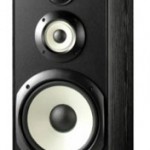
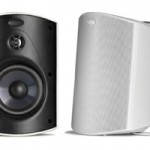
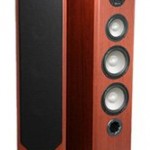

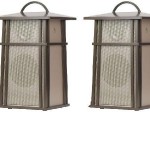
I was looking at this model today and then stumbled upon this review (posted today as well!). It was very helpful, thanks!
Pingback: M3 Bookshelf Speaker Review | AxiomAudioBlog
I find it a bit laughable that you think speaker break in is real and the effects of switching out speakers cables is audible.
Axiom doesn’t buy into that nonsense and neither does anyone that can measure audio gear.
That being said your opinion on the sonic attributes of this speaker seem to reflect my own. They are a solid performing bookshelf but they lack the depth in soundstage and vocal clarity that I’ve heard on much pricier products.
Hi Jeff -
I’m glad we’ve come to a bit of the same conclusion. I can’t help you with the other issue though. I guess it is something you either hear or you don’t. Thankfully measurements aren’t the end all of speakers. Otherwise a lot of speakers would essentially sound the same. And we know that isn’t the case.
I haven’t heard the v3 models, but I did own a pair of M3 v2′s and they were outstanding. I’m not sure about soundstage and vocal clarity, but I thought having heard most of the other internet brands and some other traditional ones, they seemed to be designed for music. Most speakers at this price point either are designed with home theater in mind; these seem to reproduce the clarity and complexity of music without being focused on good vocals (not that the vocals were bad).
Axiom says itself, and views it as a design goal, to make a neutral sound. So while saying they sounded flat is probably accurate, thats how they’re designed. The only thing I can think to add is that most people seem to think Axiom speakers are forward, not a “few rows back from the stage” speakers, and they can sound very bright if room acoustics are poor but become unfatiguing when placed well.
I have the Axiom Algonquins which are the outdoor version of the M3 v3 on my covered porch. I love the fact that they employ a simple tweeter crossover filter rather than a complex sound sucking crossover. This allows the driver to be very efficient and run full range. Because of their efficiency they sound great with SETs and Tripath amps.